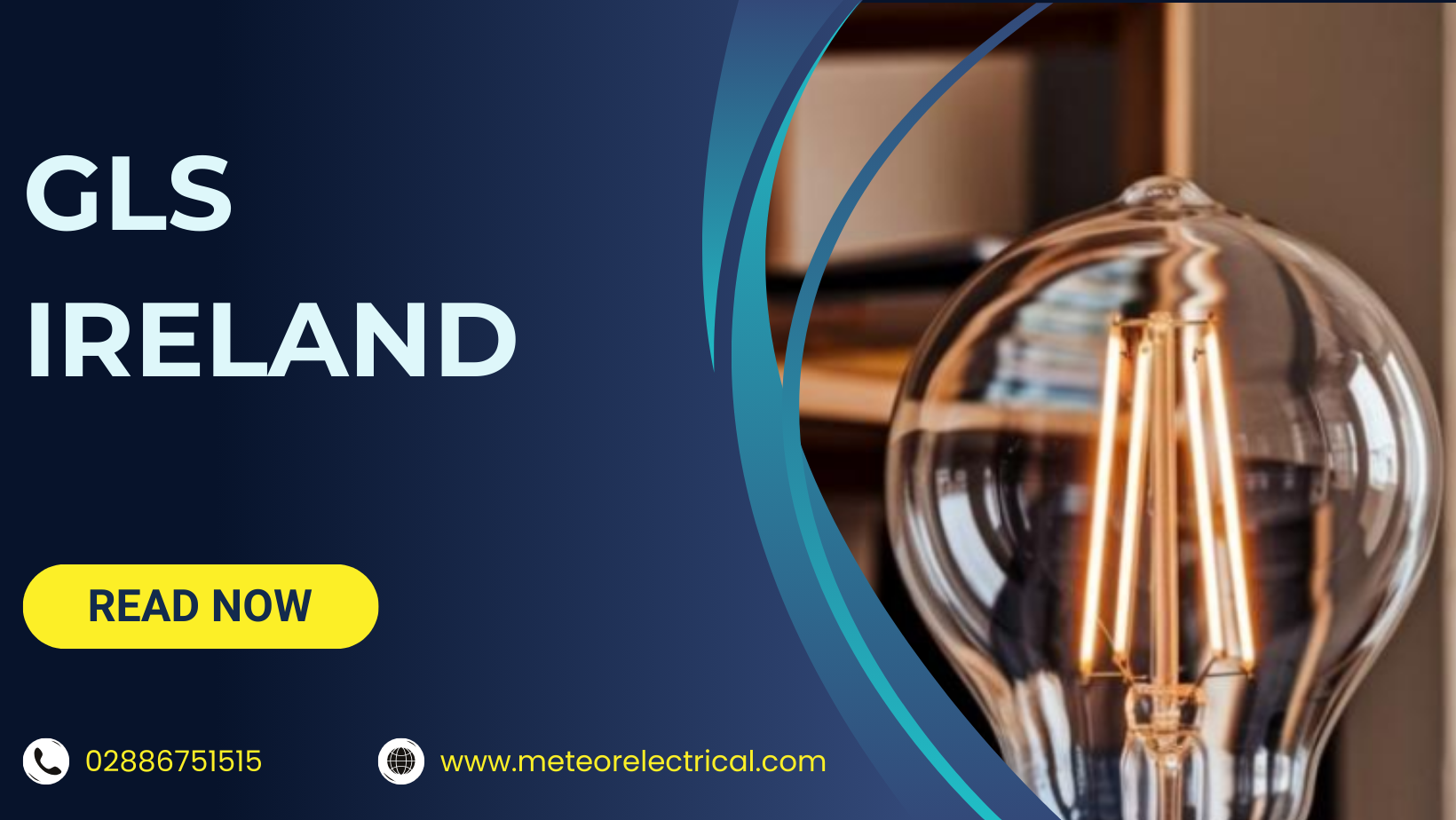GLS Ireland
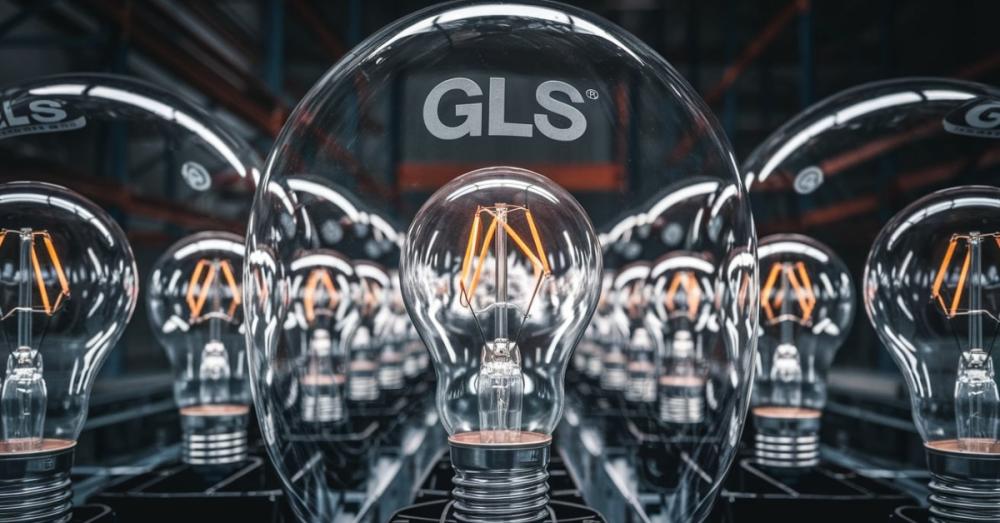
When it comes to crafting an efficient and stylish lighting design, high-quality GLS bulbs are a stellar choice. GLS bulbs are among the most prevalent types of light bulbs available today, celebrated for their versatile retrofitting capabilities. Whether you're updating your home lighting or outfitting a commercial space, these bulbs seamlessly integrate into various installations, making them the ideal luminaire for any building type.
Originally, GLS bulbs were incandescent, but with advancements in technology, LED GLS bulbs have largely taken their place. If you currently use GLS bulbs or are keen to learn more about them, this guide provides everything you need to know about GLS light bulbs. From their history and evolution to the different types available, you'll gain a comprehensive understanding to make informed lighting decisions for your space.
For more insights into energy-efficient lighting options, you can visit Energy.gov's lighting guide or check out The Lighting Research Center.
What Are GLS Light Bulbs And Why Are They Important?
Before delving into the best GLS light bulbs available in Ireland, it’s essential to grasp what GLS bulbs are and how they function. The GLS light bulb is one of the most traditional designs of a light luminaire, having been manufactured for over a century since the light bulb's inception.
So, what exactly is a GLS bulb? The GLS bulb features a classic pear-like design that allows light to spread evenly throughout a room. This efficient design makes GLS bulbs highly versatile, maintaining their popularity as one of the most preferred bulb shapes available today.
Modern GLS bulbs often showcase an opaque or pearl appearance and are crafted from heat-resistant glass or thermal plastic. They come with one of two types of cap components: the B22 bayonet cap (often labeled as BC), which is a push-and-twist type, or the E27 Edison screw base, which screws directly into the light socket. In the UK and Ireland, the B22 is the more prevalent version, easily found across Europe as well.
Understanding the different types of GLS bulbs is crucial for selecting the right one for your needs. For a detailed comparison of light bulb efficiencies, refer to Energy Star's Lighting Guide.
The History And Evolution Of GLS Light Bulbs
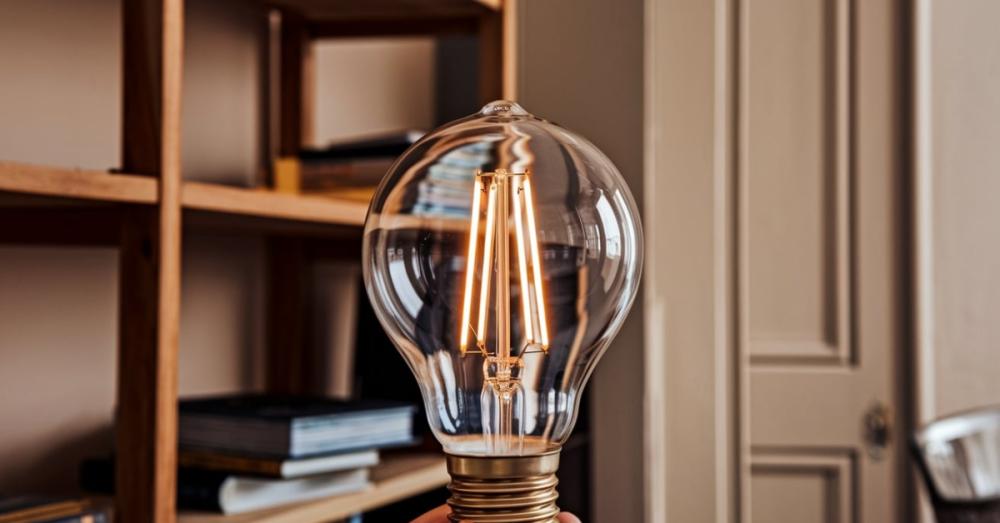
The GLS light bulb is arguably one of the most recognised light bulbs today, with its imagery serving as the classic representation in advertisements and online content alike. While Thomas Edison is often credited with the invention of the GLS bulb, it was actually a collaboration between a physicist and a chemist who created the first common light bulb in 1879.
In 1885, Edison patented the pear-shaped light bulb and established his company, the General Lighting Service, from which the acronym GLS originates. By 1914, the General Lighting Service had sold over 88 million light bulbs, marking a significant increase in sales and solidifying GLS light bulbs as the industry standard.
Today, GLS light bulbs are ubiquitous, available in various styles to suit any light fixture. As the lighting industry continues to evolve, older GLS models with incandescent components have been largely phased out throughout Europe, replaced by LED GLS bulbs that offer greater energy efficiency, higher brightness, and longer lifespans.
For a deeper dive into the history of light bulbs, Wikipedia’s article on the light bulb is an excellent resource.
Credit: CNBC
What Are The Different Types Of GLS Light Bulbs?
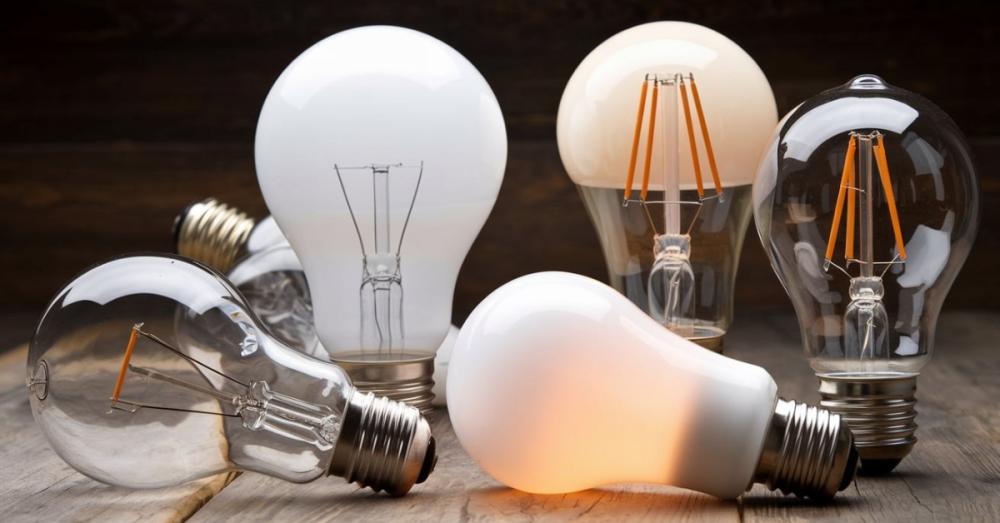
As previously mentioned, there are two primary types of GLS light bulbs, each with its own set of applications and benefits. Let’s take a closer look at these two varieties.
E27 GLS Bulb
The E27 bulb, also known as the Edison screw GLS lamp, is most commonly used in North America, but it’s also prevalent in the UK and Ireland. This light fixture features a threaded base that works well with screw-in fixtures.
The base of an E27 bulb is 27mm wide, making it a popular option for domestic light fixtures such as lamps and feature lighting. E27 light bulbs are easy to install and come in a wide variety of sizes, shapes, colour temperatures, lumens, and components, offering flexibility to meet diverse lighting needs.
B22 GLS Bulb
In the UK and Ireland, the B22 GLS light bulb is one of the most common types. These bulbs feature a classic bayonet shape and base fitting, with two mounted areas on either side of the bulb. Often referred to as a standard bayonet fitting, the B22 bulb is typically used in most domestic and commercial properties.
While the B22 bulb is sometimes confused with the smaller B15 bayonet lamp, the latter is much less common. Similar to E27 bulbs, B22 GLS bulbs come in various colour temperatures and sizes to fit all your lighting needs. Some B22 GLS bulbs even feature dimmer functions, allowing you to adjust the illumination according to your preferences, making them one of the most versatile luminaires on the market.
What Are The Different Types Of Bulbs?
Understanding the different models of GLS light bulbs is crucial to appreciate why LED GLS bulbs outperform other types. Here's a comparison of the four main types of light bulbs that have been used throughout the years.
Incandescent Light Bulbs
Incandescent or traditional light bulbs were invented over a century ago and are considered one of the earliest iterations of luminaries. Despite their long history, the use of incandescent bulbs has become highly controversial due to their inefficiency and environmental impact.
These bulbs consume a significant amount of energy and are detrimental to the environment, leading many governments to phase them out. Incandescent light fixtures contain a piece of hard metal wire, typically made from tungsten, with an extremely high melting point. This wire glows when electricity passes through it, producing light. However, only about 10% of the electricity used by a traditional incandescent bulb is converted into visible light, with the remaining 90% wasted as heat. This inefficiency not only leads to higher energy bills but also necessitates frequent bulb replacements due to their short lifespan.
Halogen Light Bulbs
To address the inefficiencies of incandescent bulbs, manufacturers developed halogen GLS bulbs. These bulbs use similar filament technology but operate at higher temperatures, making them slightly more efficient than incandescent bulbs. Halogen lamps emit a brighter light and have a slightly longer lifespan, thanks to the small amount of halogen gas they contain. This gas interacts with the tungsten vapour from the filament, recycling it back onto the filament and preventing the bulb from blackening quickly.
Despite these improvements, halogen bulbs are only marginally more efficient and are gradually being replaced by more energy-efficient options like LEDs. In the UK, halogen bulb sales are declining as LEDs make up an increasing share of luminaire sales.
Compact Fluorescent Light Bulbs (CFLs)
Compact fluorescent lamps, or CFLs, were among the first energy-efficient light solutions designed to replace incandescent bulbs. CFLs can last over 8,000 hours, significantly longer than both incandescent and halogen lamps. They also consume approximately 70 to 80% less electricity than incandescent bulbs, making them a popular choice for energy-conscious consumers.
CFLs contain argon gas and small amounts of mercury vapour inside a glass tube. When electricity passes through, the mercury vapour reacts with the argon to produce ultraviolet light, which then interacts with a fluorescent coating inside the tube to emit visible light. However, the presence of mercury requires careful disposal to prevent environmental contamination, and CFLs are still not as efficient or long-lasting as LED bulbs.
Light Emitting Diode (LED) Bulbs
Following CFLs, LED light bulbs emerged as the most efficient lighting option available. LEDs have surpassed CFLs in popularity due to their superior energy efficiency, longer lifespan, and decreasing production costs. LEDs convert a higher percentage of electricity into light, making them a more sustainable choice for both domestic and commercial applications.
LEDs are available in various formats, including linear fluorescent lamps and strip lights, commonly used in workplaces and industrial settings. Unlike incandescent bulbs, which emit light in all directions, LEDs initially emitted directional light. However, modern LED designs incorporate diffuser lenses and reflectors to distribute light more evenly, similar to incandescent bulbs.
Despite their higher upfront cost, LEDs offer significant long-term savings due to their low energy consumption and extended lifespan. They use lumens to measure light output rather than watts, allowing consumers to achieve high-intensity illumination without increased energy usage.
Why Choose GLS Bulbs for Your Lighting Needs?
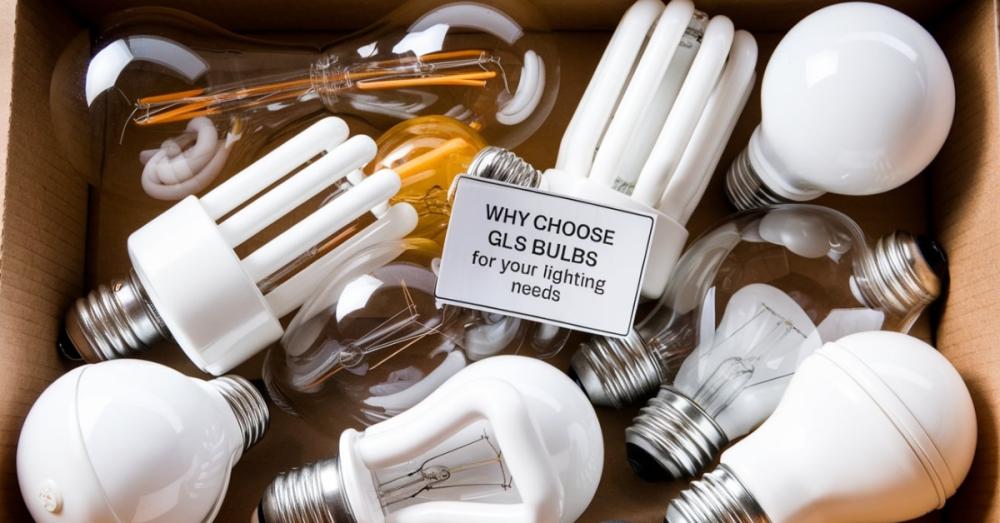
GLS light bulbs, particularly the modern LED variants, offer numerous benefits that make them an excellent choice for any lighting project. Here’s why you should consider GLS bulbs for your home or business:
Energy Efficiency
LED GLS bulbs consume significantly less energy compared to incandescent and halogen bulbs. This efficiency translates to lower electricity bills and a reduced carbon footprint, making them an environmentally friendly choice. By choosing energy-efficient lighting, you're not only saving money but also contributing to a more sustainable future.
Longevity
One of the standout features of LED GLS bulbs is their impressive lifespan. Often lasting up to 25,000 hours or more, these bulbs reduce the need for frequent replacements. This longevity means fewer trips to the store and lower maintenance costs over time, providing both convenience and cost savings.
Versatility
With options like E27 and B22 bases, GLS bulbs are compatible with a wide range of fixtures. Whether you're updating a chandelier, floor lamp, or recessed lighting, there's a GLS bulb to fit your needs. This versatility makes GLS bulbs a go-to choice for diverse lighting applications, ensuring that you can find the perfect bulb for any setting.
Brightness and Quality of Light
Modern LED GLS bulbs offer superior brightness and a quality of light that rivals traditional bulbs. They come in various colour temperatures, allowing you to customise the ambiance of your space. Whether you prefer the warm glow of 2700K bulbs for a cosy atmosphere or the crisp light of 5000K bulbs for task lighting, GLS bulbs provide the flexibility to achieve the desired illumination.
Environmental Impact
By choosing LED GLS bulbs, you contribute to environmental sustainability. LEDs produce less heat, contain no harmful mercury, and are fully recyclable, making them a responsible choice for eco-conscious consumers. Additionally, their energy efficiency reduces overall energy consumption, further minimising your environmental footprint.
Cost-Effectiveness
While LED GLS bulbs may have a higher upfront cost compared to traditional bulbs, their long-term savings make them a cost-effective investment. The combination of lower energy usage and extended lifespan ensures that you save money over time, offsetting the initial expense. Additionally, many governments and utility companies offer rebates and incentives for switching to energy-efficient lighting, enhancing the financial benefits.
Improved Safety
LED GLS bulbs operate at lower temperatures compared to incandescent and halogen bulbs, reducing the risk of burns and fire hazards. Their robust construction makes them less fragile, enhancing safety in environments where durability is essential. This improved safety feature is particularly beneficial in homes with children or in commercial settings where safety is a priority.
Enhanced Control and Features
Many modern GLS bulbs come with advanced features such as dimmability and smart connectivity. Dimmable GLS bulbs allow you to adjust the brightness to suit different moods and activities, providing greater control over your lighting environment. Smart GLS bulbs can be integrated with home automation systems, enabling remote control, scheduling, and colour customization through smartphone apps. These enhanced features offer added convenience and functionality, elevating your overall lighting experience.
Aesthetic Appeal
GLS bulbs are designed to blend seamlessly with various décor styles, enhancing the aesthetic appeal of any space. Their classic pear-like shape and modern finishes ensure that they complement both traditional and contemporary interiors. Whether used as a primary light source or as accent lighting, GLS bulbs add a touch of elegance and sophistication to your surroundings.
Easy Installation
Installing GLS bulbs is straightforward, thanks to their standardised bases. Whether you're replacing an old bulb or setting up a new fixture, the ease of installation ensures that you can quickly and efficiently upgrade your lighting without the need for professional assistance. This user-friendly aspect makes GLS bulbs an accessible option for homeowners and businesses alike.
Reliable Performance
LED GLS bulbs offer consistent and reliable performance, maintaining their brightness and colour quality over time. Unlike traditional bulbs that may dim or flicker as they age, LEDs provide steady illumination, ensuring that your lighting remains effective and aesthetically pleasing throughout the bulb's lifespan.
How Do Energy-Efficient LEDs Compare to Other Light Bulbs?
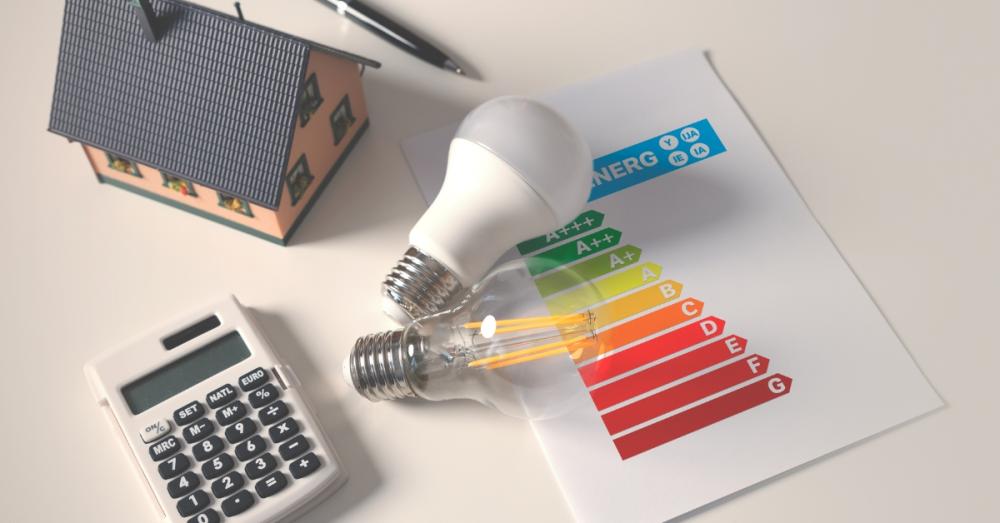
When it comes to choosing the best energy-efficient light bulb, LEDs effortlessly take the crown. LED light bulbs are significantly more efficient than any other lighting option available today, using up to 90% less energy than incandescent or halogen bulbs with similar brightness.
Think about this: A 4-watt LED bulb can produce the same amount of light (measured in lumens) as a 50-watt halogen bulb. How is this possible? It all boils down to LED technology’s superior ability to convert electricity directly into light without wasting much energy as heat.
Take Kosnic bulbs, for example. They are engineered for maximum efficiency, operating at very low wattage while delivering impressive lumen output. This efficiency is thanks to the innovative mechanical design of LEDs. Unlike traditional bulbs where most of the energy is lost as heat, LEDs focus on producing light, making much better use of the energy they consume.
Superior Efficiency Over Time
One of the standout advantages of LED bulbs is their ability to maintain efficiency over a longer period compared to other types. While all light bulbs experience some drop in efficiency as they age, LEDs handle this much better. They do see a slight dip in performance as current increases, but this drop is significantly lower than what you'd see with incandescent bulbs. In other words, LEDs stay bright and efficient for much longer, saving you money and hassle in the long run.
Longer Lifespan
LEDs also boast an impressive lifespan. Unlike incandescent bulbs that burn out quickly due to heat emissions, LEDs don’t suffer from thermal damage. A well-built LED bulb can last up to 25 times longer than traditional light bulbs. This longevity means fewer replacements, less maintenance, and more consistent lighting for your home or business.
Lower Heat Emission
Another big win for LEDs is their minimal heat production. Traditional bulbs release a lot of energy as heat, which not only wastes power but can also pose safety risks and increase cooling costs in your home. LEDs, on the other hand, stay cool to the touch, making them safer and more energy-efficient.
Ongoing Innovations
Manufacturers are continuously pushing the boundaries of LED technology. Research is focused on extending the lifespan of LEDs even further and improving their efficiency, making them an ever-more attractive option for consumers. As a result, we can expect even more advanced and cost-effective LED bulbs to hit the market in the near future.
Why Is Energy-Efficient Lighting Important?
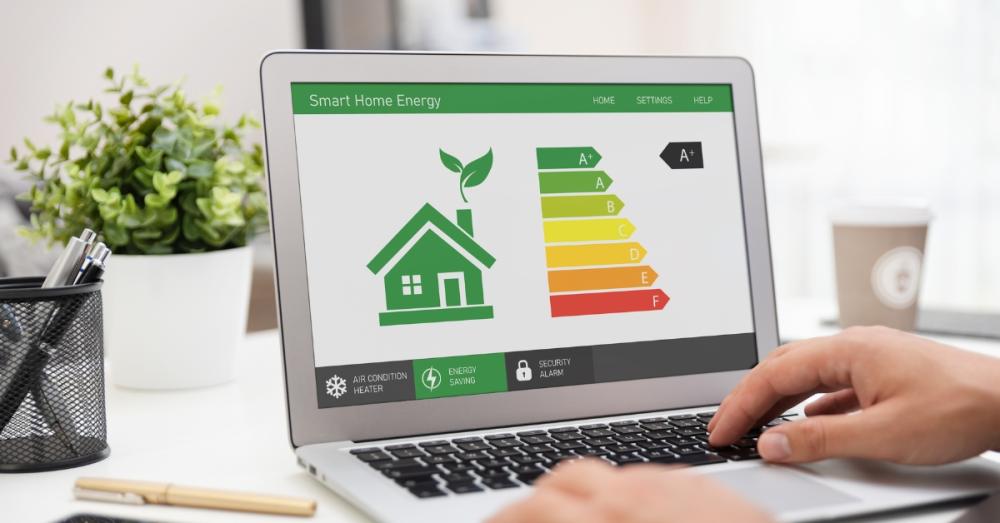
Energy-efficient lighting isn’t just a trendy term—it’s a crucial component of sustainable living and smart energy management. Here’s why making the switch matters:
Lower Energy Consumption
Energy-efficient luminaires reduce the energy usage of light bulbs without compromising on brightness or functionality. These smart lighting solutions consume less energy to perform the same task as traditional lamps, meaning you get the same amount of light for a fraction of the energy cost.
Cost Savings Over Time
While energy-efficient lighting options like LEDs might come with a higher upfront cost, the long-term savings are undeniable. By using less electricity and lasting significantly longer, these bulbs help you save money on your energy bills and reduce the frequency of replacements. It’s an investment that pays off over time.
Reduced Environmental Impact
Lighting accounts for a significant portion of global energy consumption—26% of Europe’s total energy usage comes from light sources alone. By switching to energy-efficient lighting, you help reduce overall energy demand, lower greenhouse gas emissions, and contribute to a more sustainable future.
Improved Quality of Life
Quality lighting enhances our daily lives, impacting everything from our mood to our productivity. Energy-efficient lights provide high-quality illumination without the drawbacks of excessive heat or flickering, creating a more comfortable and pleasant environment in both residential and commercial spaces.
Long-Term Sustainability
High energy consumption is not sustainable in the long run. As our reliance on lighting grows, so does the need for sustainable solutions. Energy-efficient lighting helps combat rising energy costs and ensures that we can meet our lighting needs without depleting valuable resources or causing environmental harm.
Versatility and Adaptability
Energy-efficient lighting solutions come in a wide variety of styles, colours, and functionalities, making them adaptable to any setting. Whether you need warm, cosy lighting for your living room or bright, clear illumination for your office, there’s an energy-efficient option that fits perfectly.
Government Incentives and Support
Many governments around the world are encouraging the adoption of energy-efficient lighting through rebates, incentives, and regulations. By making the switch, you not only benefit financially but also align with broader environmental and energy-saving goals supported by public policy.
Credit: simpleshow foundation
Phasing Out of Inefficient Lighting
Switching to LED GLS bulbs has never been more important, as many governments are actively phasing out inefficient lighting options. Here's what's happening globally and why you should make the switch now:
Government Regulations
In various parts of the world, including Ireland, manufacturers are being mandated to cease the production of incandescent GLS light bulbs in favor of more energy-efficient models. These regulations aim to cut back on energy consumption and reduce environmental harm, aligning with broader sustainability goals.
UK’s Phase-Out Plan
The UK has set a clear timeline, planning to phase out all inefficient lighting by 2023. This move is part of a larger strategy to promote energy efficiency and reduce carbon emissions. By eliminating outdated lighting options, the UK is paving the way for more sustainable lighting solutions like LEDs.
Ireland’s Leadership
Ireland was the first country in the European region to propose a ban on incandescent light bulbs back in 2009. This forward-thinking move has driven consumers to embrace LED lighting, which offers substantial energy savings and environmental benefits. The Irish government continues to push for bans on other inefficient lighting in the coming years, further increasing the demand for LED lights.
Environmental Benefits
Switching to LED lights is not just about saving money—it’s also about making a positive impact on the environment. LED luminaries are expected to cut down 1.26 million tonnes of carbon dioxide in the atmosphere, significantly contributing to the fight against climate change.
Increasing Availability and Innovation
As demand for energy-efficient lighting grows, manufacturers are investing more in research and development to create innovative LED solutions. This means consumers can expect a wider variety of high-quality, cost-effective LED bulbs to choose from, making the transition smoother and more accessible.
Incentives for Manufacturers
Governments are not only regulating but also incentivising manufacturers to produce more efficient lighting solutions. This support is crucial for driving innovation and making energy-efficient bulbs more affordable and widely available.
Market Growth
The energy-efficient lighting industry is booming, with projections estimating it will reach £324 billion by 2027. High demand is driving advancements in technology and reducing costs, ensuring that energy-efficient lighting becomes the standard choice for consumers worldwide.
How to Use Energy-Efficient GLS Light Bulbs
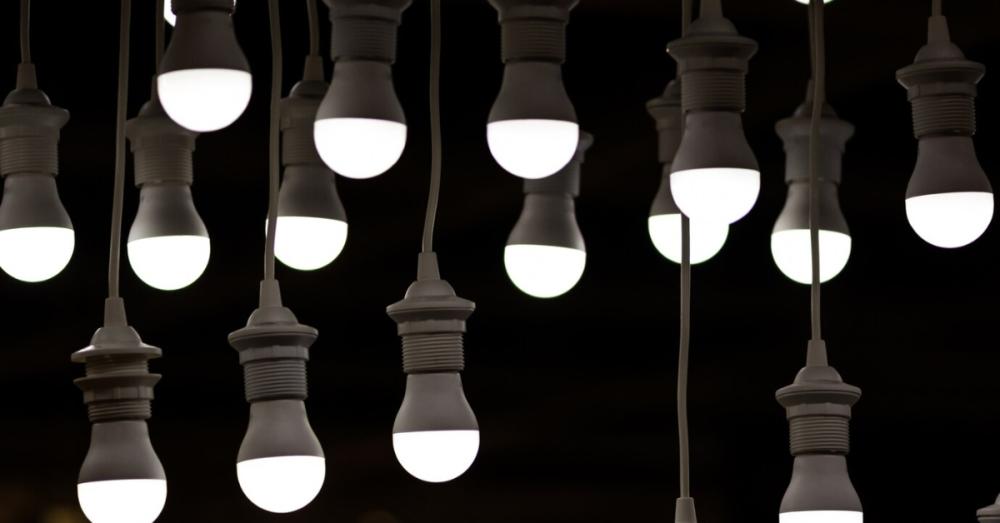
Implementing energy-efficient lighting can make a significant difference in reducing energy consumption and saving costs. Here are some key areas where you should consider using energy-efficient GLS light bulbs:
Residential Properties
Whether you live in a house, apartment, or any other type of residence, switching to energy-efficient lighting can yield substantial benefits. Homeowners can enjoy major energy savings by replacing traditional bulbs with LEDs, which not only reduce electricity bills but also require fewer replacements due to their longer lifespan.
Benefits for Homes:
- Cost Savings: Lower energy bills over time.
- Convenience: Fewer bulb replacements mean less maintenance.
- Environmental Impact: Reduced carbon footprint from lower energy consumption.
Additionally, implementing energy-efficient lighting in residential properties raises awareness about sustainable living and encourages others to make similar eco-friendly choices.
Commercial Properties
Places like shopping centers, malls, restaurants, and other commercial establishments are often in constant use, sometimes operating 24/7. This high level of activity leads to substantial energy consumption for lighting, resulting in high energy costs.
Benefits for Commercial Spaces:
- Energy Savings: Significant reduction in electricity usage.
- Enhanced Ambiance: Better lighting quality can improve customer experience.
- Operational Efficiency: Lower energy costs contribute to overall business profitability.
Switching to energy-efficient lighting in commercial properties can lead to substantial cost savings and create a more inviting and sustainable environment for customers and employees alike.
Industrial Complexes
Industrial sectors operate around the clock, consuming vast amounts of power not just for lighting but also for machinery and production processes. Implementing energy-efficient lighting in these settings is crucial for reducing overall energy consumption and lowering operational costs.
Benefits for Industrial Settings:
- High Energy Efficiency: Significant reductions in power usage.
- Durability: LED bulbs withstand harsh industrial environments better than traditional bulbs.
- Environmental Compliance: Helps meet sustainability targets and reduce greenhouse gas emissions.
By adopting energy-efficient lighting, industrial complexes can achieve considerable energy savings and contribute to broader environmental goals, making their operations more sustainable and cost-effective.
Public and Institutional Buildings
Schools, hospitals, government buildings, and other public institutions can also benefit greatly from energy-efficient lighting. These buildings often have extensive lighting needs, and transitioning to LEDs can lead to substantial energy and cost savings.
Benefits for Public Institutions:
- Budget Efficiency: Lower energy bills free up funds for other important initiatives.
- Enhanced Lighting Quality: Improved illumination can benefit both staff and visitors.
- Sustainability Leadership: Demonstrates a commitment to environmental responsibility.
Implementing energy-efficient lighting in public and institutional buildings sets a positive example for the community and highlights the importance of sustainable practices.
Outdoor Lighting
Energy-efficient lighting isn’t limited to indoor applications. Outdoor lighting for streets, parks, parking lots, and other public spaces can also benefit from LEDs. These bulbs provide bright, reliable illumination while consuming less energy and lasting longer than traditional outdoor lighting options.
Benefits for Outdoor Lighting:
- Cost Savings: Reduced energy consumption leads to lower operational costs.
- Safety: Better lighting improves visibility and safety in public spaces.
- Maintenance: Longer-lasting bulbs mean less frequent replacements and lower maintenance costs.
By upgrading to energy-efficient outdoor lighting, municipalities and property owners can enhance safety, reduce energy usage, and lower maintenance expenses.
Smart Home Integration
For those who enjoy the latest in home technology, integrating energy-efficient GLS bulbs with smart home systems can offer even greater control and convenience. Smart LEDs can be controlled remotely, scheduled, and even customised in terms of colour and brightness, adding an extra layer of functionality to your lighting setup.
Benefits of Smart Integration:
- Convenience: Control lighting from anywhere using a smartphone or voice commands.
- Customization: Adjust colours and brightness to suit different moods and activities.
- Energy Monitoring: Track energy usage and optimise settings for maximum efficiency.
Smart home integration with energy-efficient LEDs not only enhances your lighting experience but also contributes to overall energy management and savings.
By strategically implementing energy-efficient GLS light bulbs in these key areas, you can make a significant impact on your energy consumption and costs. Not only do these lighting solutions offer substantial savings, but they also contribute to a more sustainable and environmentally friendly future.
Credit: Lowe's Home Improvement
How to Find the Best GLS Light Bulb
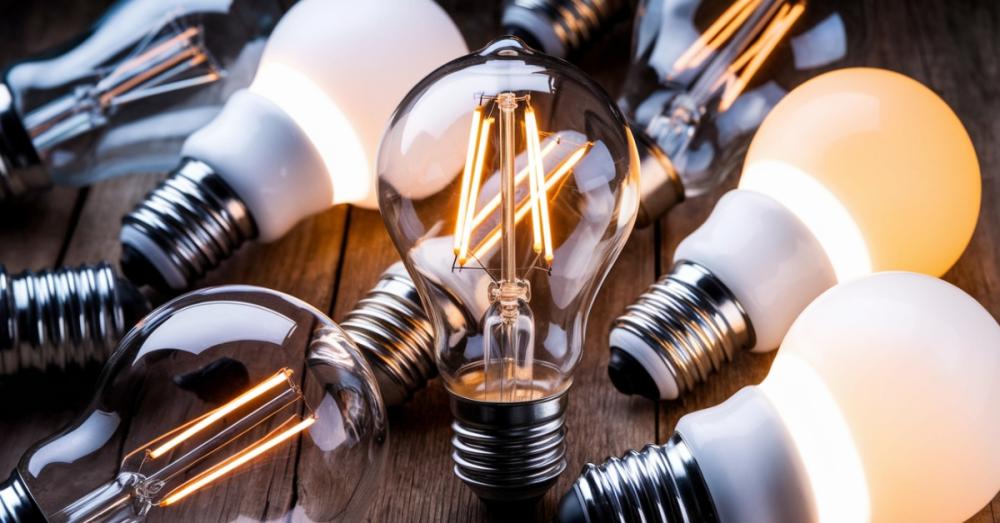
Choosing the perfect GLS light bulb involves considering several factors to ensure you select the most energy-efficient and suitable option for your needs. Here are the key features to keep in mind:
Measure Power Usage with Watts
Watts measure the amount of power a light bulb consumes. While traditional incandescent bulbs relied heavily on wattage to determine brightness, modern LEDs use watts more efficiently to produce the same amount of light.
Tips:
- Check Fixture Ratings: Always consider the maximum wattage rating of your light fixture to prevent overheating and potential hazards.
- Opt for Lower Wattage: Choose bulbs that operate at lower wattage to reduce energy consumption and heat emissions. LEDs typically use less wattage while providing the same or greater brightness compared to incandescent bulbs.
Measure Light Emissions with Lumens
Lumens measure the actual light output of a bulb, making it a more accurate indicator of brightness than watts. When replacing incandescent bulbs with LEDs, focus on lumen output to ensure you achieve the desired level of illumination.
Conversion Guide:
- 100W Incandescent ≈ 1600 Lumens LED
- 75W Incandescent ≈ 1100 Lumens LED
- 60W Incandescent ≈ 800 Lumens LED
- 40W Incandescent ≈ 450 Lumens LED
Considerations:
- Room Requirements: Assess the brightness needs of each room. For example, living rooms and kitchens may require higher lumen outputs, while bedrooms and hallways might need less.
- Multiple Bulbs: Sometimes, using multiple lower-lumen bulbs can provide better lighting distribution than a single high-lumen bulb.
Consider the Colour Temperature
Colour temperature affects the mood and functionality of a space. Measured in Kelvin (K), it ranges from warm yellow tones to cool blue hues.
Guidelines:
- 2000K - 3000K (Warm White): Ideal for bedrooms, dining rooms, and living rooms, creating a cosy and relaxed atmosphere.
- 3500K - 4000K (Neutral White/Cool White): Suitable for bathrooms, kitchens, and office spaces where clear and bright illumination is needed.
- 4500K (Bright White): Perfect for work and construction areas, reading lamps, and vanity tables, providing clarity and detail.
- 5000K and Above (Daylight): Best for workshops and garages, offering bright and crisp lighting for detailed tasks.
Choosing the Right Temperature:
- Ambiance: Decide the mood you want to create in each room.
- Functionality: Match the colour temperature to the room’s primary activities (e.g., bright for workspaces, warm for relaxation areas).
Assess Dimmability
Not all LED GLS bulbs are dimmable, so it's important to check if your chosen bulbs are compatible with dimmer switches.
Benefits of Dimmable LEDs:
- Versatility: Adjust brightness to suit different times of day and activities.
- Energy Savings: Lower brightness settings consume even less energy.
- Mood Setting: Create the perfect ambiance for any occasion.
Tips:
- Check Compatibility: Ensure the bulb is labeled as dimmable and compatible with your existing dimmer switch.
- Upgrade Dimmer Switches: If necessary, consider upgrading to a dimmer switch that works well with LED technology to avoid flickering and ensure smooth dimming.
Evaluate Smart Features
For those interested in the latest technology, smart GLS bulbs offer advanced control and customization options.
Features:
- Remote Control: Manage your lighting from anywhere using a smartphone app.
- Scheduling: Set specific times for your lights to turn on or off automatically.
- Colour Customization: Change the colour and intensity of your lights to match your mood or decor.
- Voice Control: Integrate with smart home assistants like Amazon Alexa or Google Assistant for hands-free operation.
Benefits:
- Convenience: Control your lighting effortlessly without needing to be physically present.
- Energy Management: Optimise your lighting schedules to maximise energy savings.
- Enhanced Functionality: Customise your lighting to enhance your living or working environment.
Check Energy Efficiency Ratings
Look for bulbs with high energy efficiency ratings to ensure maximum savings and performance.
Ratings to Consider:
- Energy Star Certification: Indicates the bulb meets strict energy efficiency and performance standards.
- Lumens per Watt (lm/W): Higher numbers indicate more efficient bulbs that produce more light per unit of energy consumed.
- Lifetime Ratings: Longer lifespans reduce the need for frequent replacements, saving both money and resources.
Compare Price and Value
While energy-efficient LEDs may have a higher upfront cost, consider the long-term savings and benefits they offer.
Factors to Compare:
- Initial Cost vs. Long-Term Savings: Calculate how much you’ll save on energy bills and replacements over the bulb’s lifespan.
- Quality and Brand Reputation: Invest in reputable brands like Kosnic to ensure you’re getting a reliable and high-performing product.
- Warranty and Support: Look for bulbs that come with warranties or customer support to protect your investment.
Read Reviews and Testimonials
Before making a purchase, read reviews and testimonials from other customers to gauge the performance and reliability of the bulbs.
What to Look For:
- Performance Feedback: Insights into brightness, colour accuracy, and longevity.
- Energy Savings Reports: Real-world examples of how much energy and money users have saved.
- Customer Service Experiences: Information about the brand’s support and warranty claims process.
What Are the Best GLS Light Bulbs on the Market?
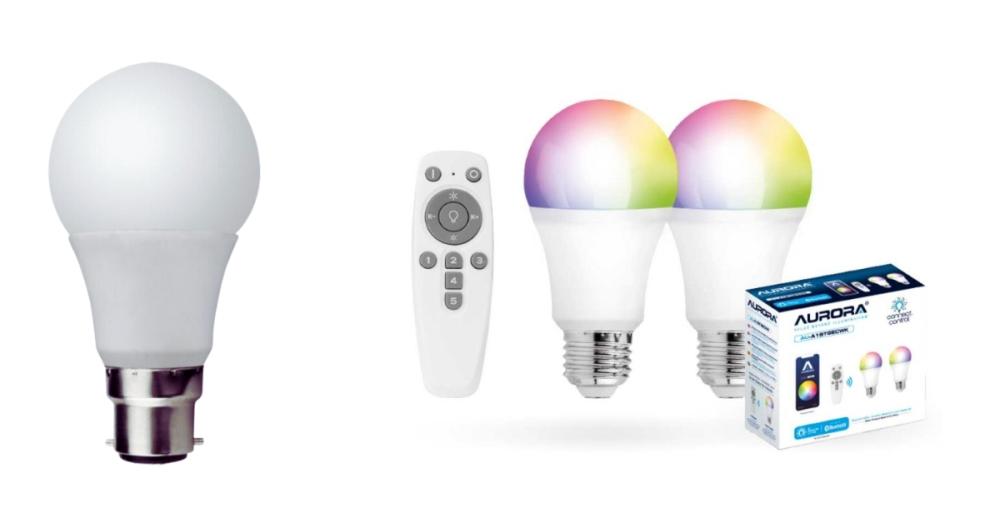
With so many options available, finding the perfect GLS light bulb can feel like navigating a maze. Whether you're a homeowner looking to reduce energy costs or a business owner aiming to create an inviting atmosphere, selecting the right bulb is crucial. If you want a wide range of lighting options that deliver energy savings without compromising on brightness, look no further than Meteor Electrical.
At Meteor Electrical, you can explore our extensive Kosnic range of energy-efficient GLS lighting solutions. Kosnic is a leading manufacturer renowned for its innovative and reliable lighting products available worldwide. Kosnic bulbs offer high-quality illumination while ensuring optimal energy efficiency, making them an excellent choice for both residential and commercial settings. Here are some of the top Kosnic GLS bulbs you can find at Meteor Electrical:
Kosnic 9 Watt LED GLS Light Lamp
If you're just beginning your journey toward energy-efficient lighting, the Kosnic 9W LED GLS Light Lamp is an excellent starting point. This versatile bulb is perfect for any household or commercial property, helping you cut down on energy bills over time.
- Lumen Output: 730 lumens
- Lifespan: 20,000 hours
- Benefits: Reliable brightness, long-lasting performance, and significant energy savings.
With these impressive specifications, you won’t have to worry about dim lighting or frequent replacements, making it a smart investment for any space.
Kosnic 4 Watt Bayonet GLS Candle LED Light
For those who appreciate a blend of efficiency and aesthetics, the Kosnic 4W Filament Candle LED Light is a fantastic option. This bulb delivers 100 lumens per watt, ensuring you get high-quality brightness while enjoying substantial savings.
- Lumen Output: 400 lumens
- Lifespan: Over 20,000 hours
- Design: Traditional candle aesthetic with modern LED technology.
This bulb not only provides excellent illumination but also adds a touch of classic elegance to your fixtures, making it ideal for dining tables, chandeliers, and more.
Kosnic 9 Watt LED GLS with Edison Screw
If you prefer the familiar Edison screw base, the Kosnic 9W LED GLS with Edison Screw is the perfect choice. This bulb combines the benefits of LED lighting with the convenience of a traditional screw base, making it easy to switch out old bulbs without any hassle.
- Lumen Output: 800 lumens
- Lifespan: 20,000 hours
- Features: High efficiency, easy installation, and superior performance compared to traditional bulbs.
Experience the best of both worlds with this reliable and efficient lighting solution that fits seamlessly into your existing fixtures.
Kosnic 5 Watt Frosted Bayonet Cap LED
Part of Kosnic’s affordable and energy-efficient LED range, the 5W Frosted Bayonet Cap LED is perfect for households seeking warm and inviting lighting. This bulb offers both ease of installation and exceptional performance.
- Lumen Output: 450 lumens
- Lifespan: 20,000 hours
- Colour Temperature: Warm white lighting, ideal for creating a cosy atmosphere.
This frosted bayonet lamp provides a soft, diffused light that enhances the ambiance of any room, making it a popular choice for living rooms, bedrooms, and dining areas.
Kosnic 5-Watt Frosted Bayonet Candle Lamp
The Kosnic 5W Frosted Bayonet Candle Lamp is a versatile and efficient lighting solution suitable for various applications. Whether you need reliable lighting for your home or your business, this bulb delivers impressive performance.
- Lumen Output: 500 lumens
- Lifespan: 20,000 hours
- Energy Savings: Up to 85% energy savings compared to incandescent or traditional bulbs.
This candle lamp is not only highly efficient but also easy to install, ensuring that you can effortlessly upgrade your lighting without any inconvenience. Its frosted design provides a soft, pleasant glow, making it perfect for both functional and decorative lighting needs.
| Model | Wattage | Lumens | Lifespan | Features | Best For |
|---|---|---|---|---|---|
| Kosnic 9W LED GLS Light Lamp | 9W | 730 Lumens | 20,000 hours | Reliable brightness, energy-efficient | Households, commercial properties |
| Kosnic 4W Bayonet GLS Candle LED Light | 4W | 400 Lumens | 20,000 hours | Traditional aesthetic, high-grade technology | Dining tables, chandeliers |
| Kosnic 9W LED GLS with Edison Screw | 9W | 800 Lumens | 20,000 hours | Edison screw base, high efficiency | Fixtures with screw base |
| Kosnic 5W Frosted Bayonet Cap LED | 5W | 450 Lumens | 20,000 hours | Warm white lighting, easy installation | Living rooms, bedrooms |
| Kosnic 5W Frosted Bayonet Candle Lamp | 5W | 500 Lumens | 20,000 hours | Versatile, energy-saving | Workshops, garages |
Final Takeaway
GLS light bulbs have become a staple in modern lighting, evolving from traditional incandescent models to highly efficient LED variants. These advancements ensure that consumers have access to reliable, long-lasting, and energy-saving lighting solutions. If you're looking for GLS light bulbs that combine reliability with exceptional performance, LED GLS bulbs are the way to go.
At Meteor Electrical, we pride ourselves on offering top-quality GLS lighting options that meet your specific needs. Our partnership with Kosnic ensures that you receive only the best in energy-efficient lighting, helping you save money while reducing your environmental impact. Whether you need bulbs for your home, office, or industrial space, Meteor Electrical has the perfect GLS solution for you.
Switching to energy-efficient GLS light bulbs is not just a smart financial decision—it's a commitment to a more sustainable and eco-friendly future. Illuminate your spaces with confidence and style by choosing Meteor Electrical for all your lighting needs. Visit our website today to explore our full range of GLS light bulbs and take the first step toward smarter, greener lighting.
Frequently Asked Questions (FAQs)
1. What is a GLS Light Bulb?
GLS stands for General Lighting Service, and a GLS light bulb typically refers to the classic pear-shaped bulb commonly used in various residential and commercial settings. These bulbs come with different base types, such as the B22 bayonet cap and the E27 Edison screw base, making them versatile and compatible with a wide range of fixtures. Modern GLS bulbs are predominantly LED variants, offering enhanced energy efficiency and longer lifespans compared to traditional incandescent or halogen bulbs.
2. How Much Energy Can I Save by Switching to LED GLS Bulbs?
Switching to LED GLS bulbs can lead to significant energy savings. LEDs use up to 90% less energy than incandescent or halogen bulbs while providing the same level of brightness. For example, a 4-watt LED can produce the same 730 lumens as a 50-watt halogen bulb. Over time, these energy savings translate to lower electricity bills and a reduced carbon footprint, making LEDs a cost-effective and environmentally friendly lighting choice.
3. Are LED GLS Bulbs Compatible with My Existing Fixtures?
Yes, LED GLS bulbs are designed to be highly compatible with existing fixtures. They come in standard base types like B22 bayonet caps and E27 Edison screws, which are widely used in homes and businesses. However, it's important to check the wattage ratings of your fixtures to ensure compatibility and prevent overheating. Additionally, if you plan to use dimmer switches, make sure to choose dimmable LED GLS bulbs and verify that your dimmer is compatible with LED technology.
4. How Long Do LED GLS Bulbs Last Compared to Incandescent Bulbs?
LED GLS bulbs boast an impressive lifespan, often lasting up to 25,000 hours or more. In contrast, traditional incandescent bulbs typically last around 1,000 hours, and halogen bulbs about 2,000 hours. This extended lifespan means fewer replacements, reduced maintenance costs, and less hassle for both residential and commercial users. Investing in LED GLS bulbs not only saves money in the long run but also contributes to a more sustainable lighting solution.
5. Can I Use Dimmer Switches with LED GLS Bulbs?
Yes, you can use dimmer switches with LED GLS bulbs, but there are a few considerations to keep in mind:
- Dimmable LEDs: Ensure that the LED GLS bulbs you purchase are specifically labeled as dimmable.
- Compatible Dimmer Switches: Use dimmer switches that are designed to work with LED technology to avoid issues like flickering or reduced dimming performance.
- Installation: If you're upgrading from incandescent to LED lighting, you might need to upgrade your dimmer switches to ones that are compatible with LEDs for optimal performance.

